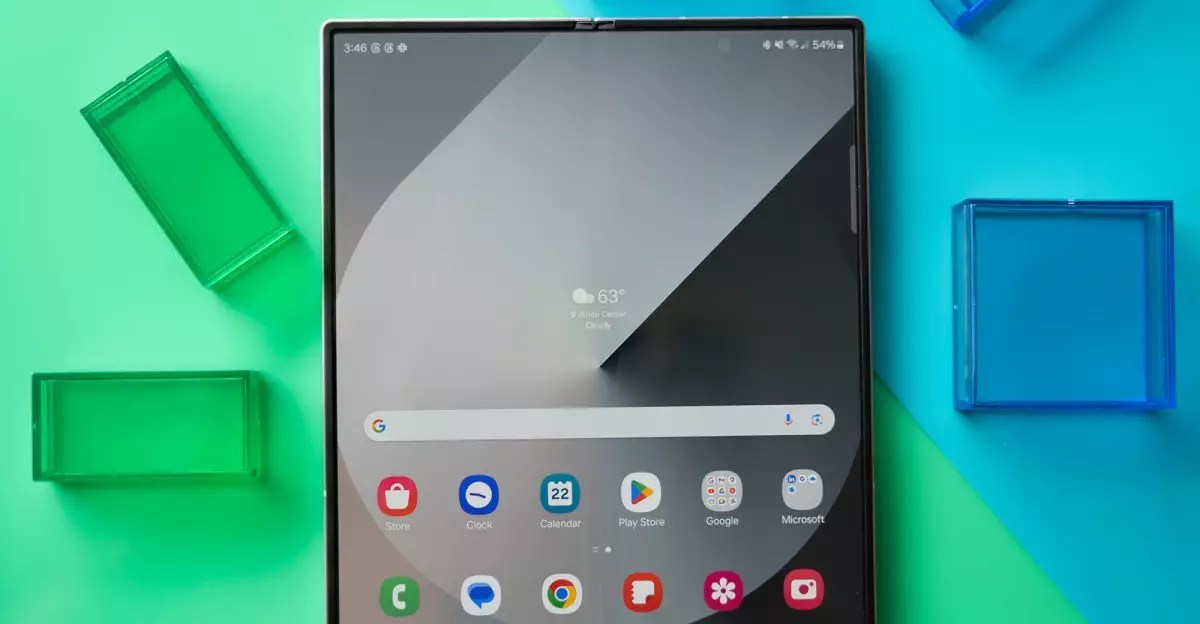Samsung’s latest foray into foldable smartphones signals a determination to redefine the landscape of mobile technology, yet persistent consumer hesitation casts a long shadow over its ambitions. Despite years of pioneering efforts and substantial marketing campaigns, foldable phones still occupy a tiny sliver of the overall smartphone market—around 1.5% in 2024, according to TrendForce. For many consumers, foldables evoke curiosity but are overshadowed by doubts about durability, cost, and practicality. This disconnect between interest and purchase behavior hints at deeper issues that Samsung must address if it truly hopes to elevate foldables from niche curiosity to mainstream revolution.
It’s clear that the novelty alone isn’t enough. Consumers are wary of investing hundreds, if not over a thousand dollars, into a device that risks damage from dust ingress or requires costly repairs. Samsung’s earlier efforts, while innovative, haven’t sufficiently alleviated these apprehensions. The company’s existing foldable lines, like the Galaxy Z Fold 6 and Z Flip 6, offered incremental upgrades but failed to ignite excitement beyond early adopters. Such tepid updates highlight a critical flaw: differentiation. Without meaningful innovation—something more than just thinner profiles and software tweaks—the foldable market risks stagnation, no matter how aggressively Samsung markets it.
Innovation or Incrementalism: The Key to Market Penetration
This year’s anticipated launches signal a bold pivot towards meaningful innovation. Samsung seems poised to introduce an ultra-branded Fold with a slimmer profile, aligning with competitors like Honor and Oppo who are pushing the boundaries of design. The Z Flip 7 is rumored to feature a larger, razr-style cover display, transforming the front panel from a mere notification window to a fully functional mini-screen. These enhancements aim to confront complaints about the high price point and tradeoffs—everything from bulky profiles to fragile hinges—that have kept foldables from surpassing traditional slabs.
Yet, I remain skeptical that these adjustments will be enough to sway the broader consumer base. While a thinner, more stylish device might appeal to early adopters, the core issues of durability and price remain unaddressed. Foldables are inherently more vulnerable because of their moving parts and complex engineering. Samsung’s inability, so far, to deliver a genuinely dustproof (IP68-rated) foldable highlights the technology’s still-maturing state. An expensive device with compromised durability seems like a risky proposition for the average user, especially amid rising prices across all consumer sectors. If Samsung truly aims to popularize foldables, it must take a giant leap beyond incremental upgrades.
The Role of Market Perceptions and Industry Rivalry
Despite the current stagnation, the mobile industry’s outlook isn’t all doom and gloom. Fortune may favor Samsung if the rumored entry of Apple into the foldable arena materializes around 2026. The buzz surrounding an iFold or similar device could potentiate a market-wide shift, drawing mainstream consumers who associate Apple’s brand with reliability and innovation. Such a move from Apple would elevate foldables from experimental tech to a bona fide segment—an opportunity Samsung cannot afford to ignore.
More radical than brand influence, the broader industry trend suggests that including tiered options—ranging from premium ultra models to more affordable foldable versions—might finally address the price barrier. Historically, Samsung’s strategy of introducing multiple models at varied price points has succeeded elsewhere, and replicating this here could be vital. By expanding the affordability spectrum and promising genuine innovation—be it through durability, battery life, or unique form factors—Samsung can create a compelling proposition that shifts foldables from a gimmick into a must-have.
Is the Future Foldable-Ready?
Ultimately, the success of Samsung’s bold plans hinges on whether they can overcome fundamental challenges. The technological hurdles—like durability, dust resistance, and repair costs—must be tackled head-on. Simply adding a few features or slimming down the profile won’t suffice. The goal should be creating a foldable that genuinely rivals the durability and convenience of traditional smartphones while retaining the allure of innovation.
If Samsung can deliver on this promise, it would redefine the narrative around foldables. It could push the industry to innovate faster, challenge consumers to think differently about form factors, and even redefine what we expect from our daily devices. The potential is enormous, but it requires more than just incremental tweaks and a strong marketing pitch; it demands a paradigm shift in design philosophy and a concerted effort to eliminate the technological hurdles that currently hold foldables back.
As the spotlight shifts toward Samsung’s upcoming releases, the question remains whether these advancements will be enough to change perceptions, ignite demand, and expand the market. The year ahead promises innovation, but whether it will be transformative or merely incremental remains to be seen. For now, Samsung’s next moves may shape the future of mobile technology more profoundly than any of us realize.


Leave a Reply